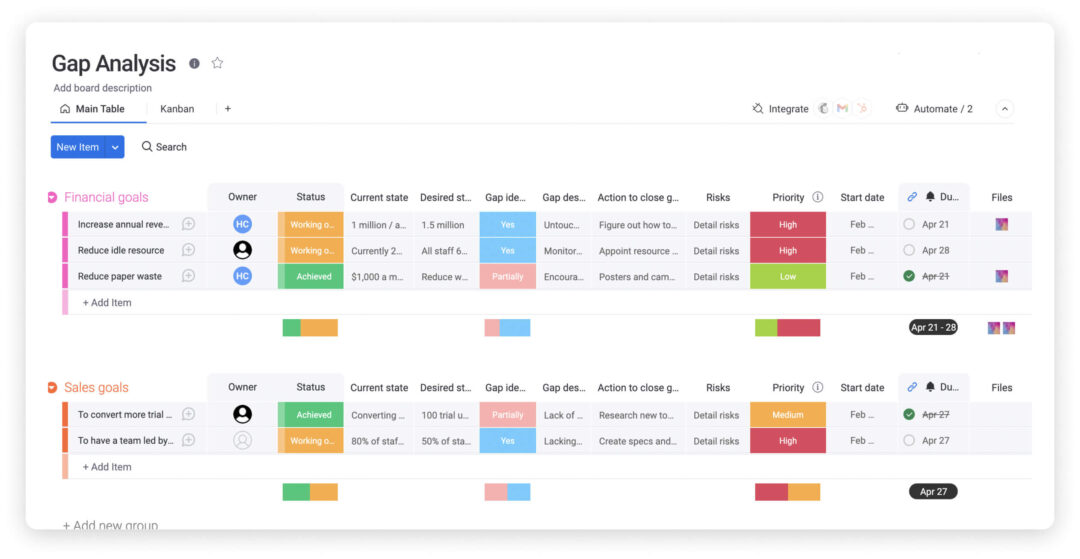Workforce planning guide with template
Blog: Monday Project Management Blog
Human capital drives growth as much as financial capital. Yet top talent doesn’t come by easily. When it does, it gets snapped up by the most prepared suitor.
If you want to win the best recruits away from your competitors, you need a plan. Fail to prepare, and you’ll be left with vacancies you can’t fill.
Having a plan can inform your talent recruitment strategy and prepare you to plug workforce gaps in the company before they appear. In this article, we’ll show you how to create a workforce plan using a template and why you need one.
What is a workforce planning template?
The workforce plan serves a similar purpose to a succession plan. It encourages you to be proactive in your recruitment strategy, identifying suitable candidates for vacant positions ahead of time. The workforce planning template can guide your company’s long-term vision and, specifically, how much human capital you need to take you there.
For example, the template may have a space for identifying skill gaps that prevent you from reaching your goal. It might also provide a space for you to form an action plan, which can list out the next steps to bridge the gap between where you are now as a company and where you want to be.
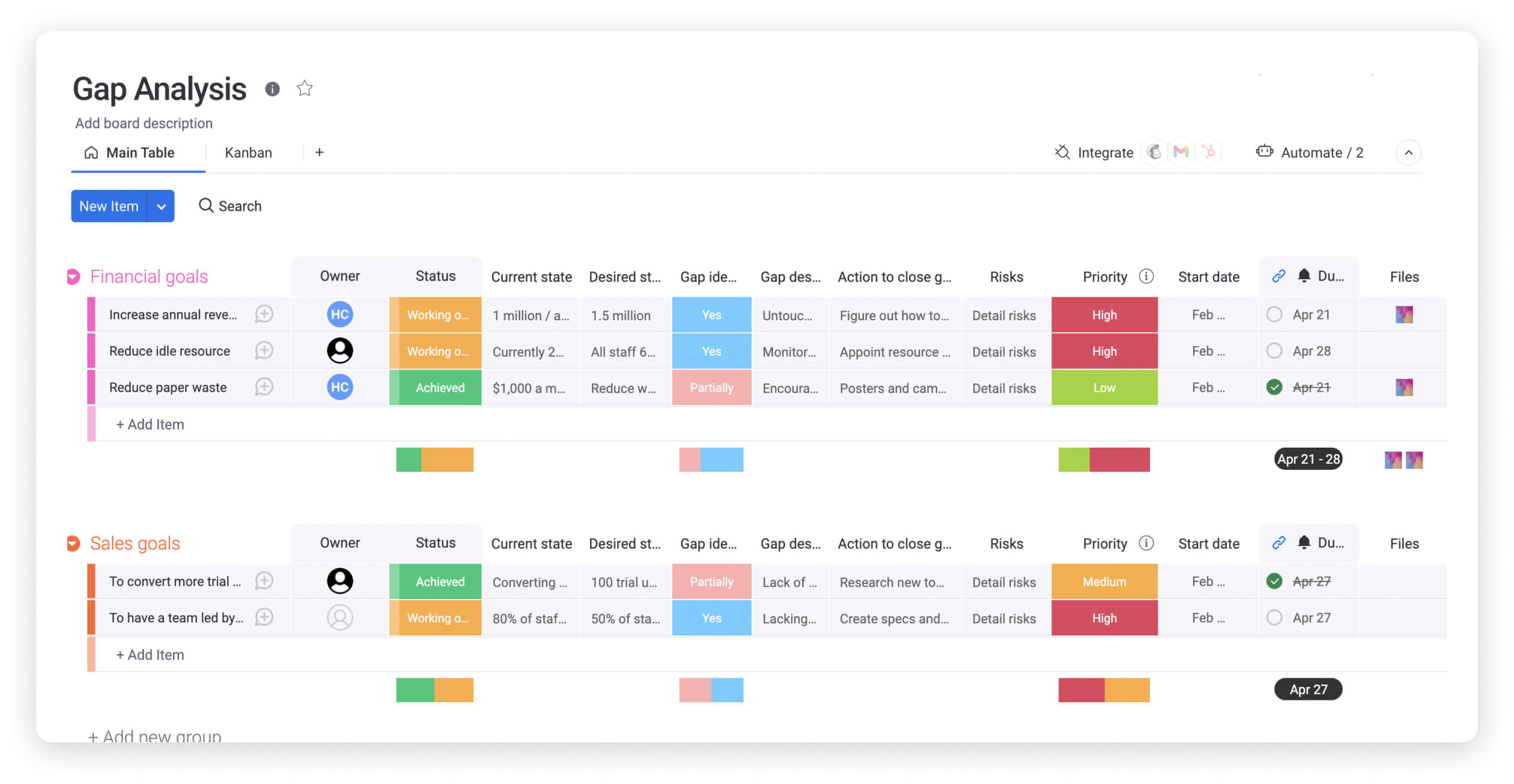
Why use a workforce planning template?
The workforce plan can inform your business strategy by factoring in both short and long-term objectives. With the template, you can generate a list of top talent that could slot into your workforce and contribute to your ongoing success. 87% of companies worldwide acknowledge that they have, or will have, a skills gap. As such, it’s important to close the skills gap before it can impact your company’s productivity levels and hinder progress toward your core objectives.
Without a workforce planning template, you deny yourself the edge over your competition. Top talent can pass you by as it emerges. Since you won’t have identified key skill gaps within your company, your recruitment strategy will suffer, and you may miss out on top candidates that could raise the stock of your human capital.
If you are determined to reach your monthly, quarterly, and annual goals, then you need to know what it takes to get there. In almost every case, you’ll need to rely on the backbone of your company, the employees, to drag you over the line. Why not ensure you always have the best and most adaptable workforce for the road ahead?
On average, 11.4% of investment is squandered as a result of poor project performance. If you want to make the most of your financial capital — bolster your human capital. Project management becomes much more straightforward when your talent aligns with your strategic goals and skill requirements.
It’s especially important in the current market to identify the best talent ahead of time since the power is shifting from the employer to the employee. With two-thirds of companies adopting an Agile work environment and prioritizing flexible hours, the employee is spoiled for choice and will pick the company that best aligns with their personal and professional goals.
What are some examples of workforce planning templates?
1. Skill gap analysis
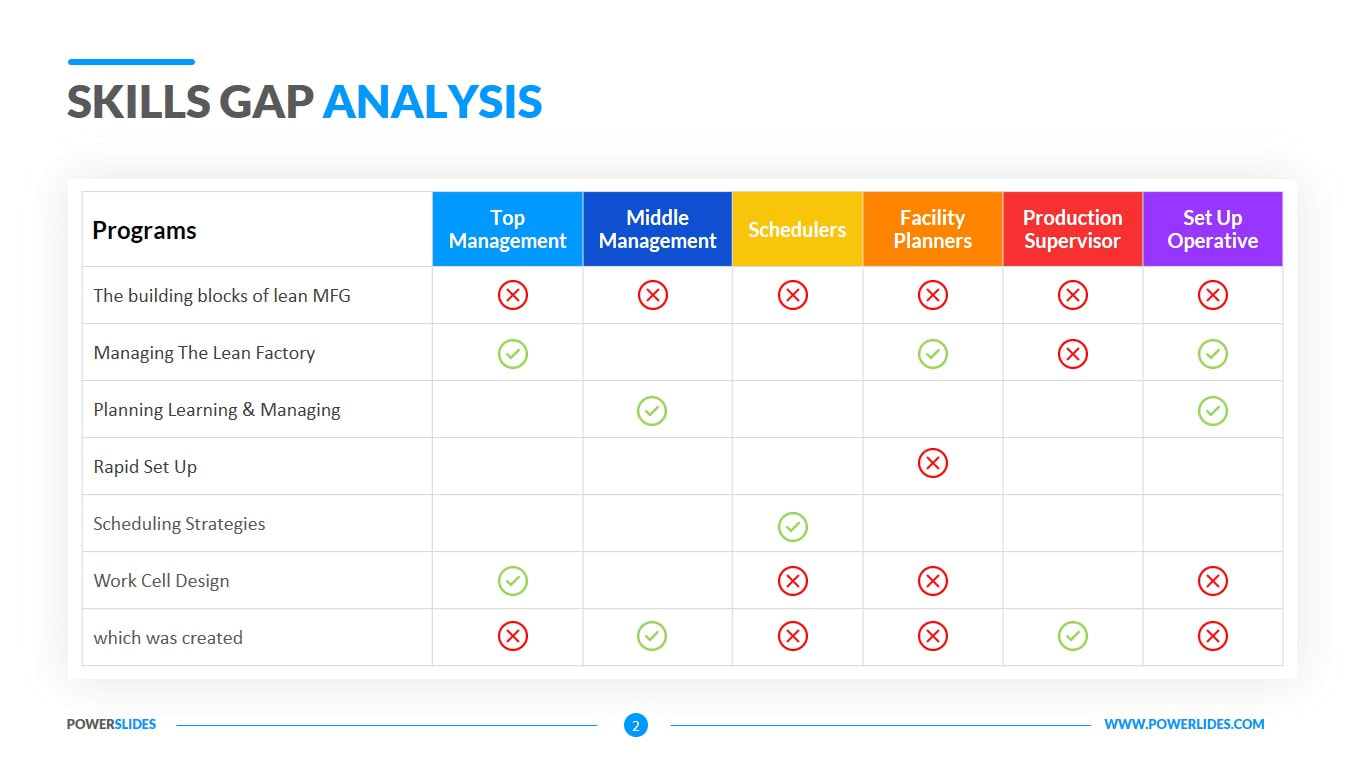
No workforce plan is complete without a comprehensive skill gap analysis. Identifying skills that are currently missing from your workforce is essential if you want to create a plan that mitigates your current weaknesses.
Conducting a skill gap evaluation doesn’t need to be overly complicated. Once you’ve singled out the few skills that are lacking in your company, you can list them out one by one. Then, you can identify training activities that could upskill your current workforce or pass the information onto the recruitment department so they can filter out candidates without the right skills.
2. Strategic workforce overview

It’s always wise to have an overview of any process you carry out so that anyone else in the company can understand it at a glance. This can help onboard recruits quickly and get them up to speed regardless of what stage you’re at with the workforce plan.
With an overview like this one, you’ll have a clear direction for your workforce plan. As such, everyone working on it will know what the next steps are and how each stage fits into the bigger picture.
3. Action plan
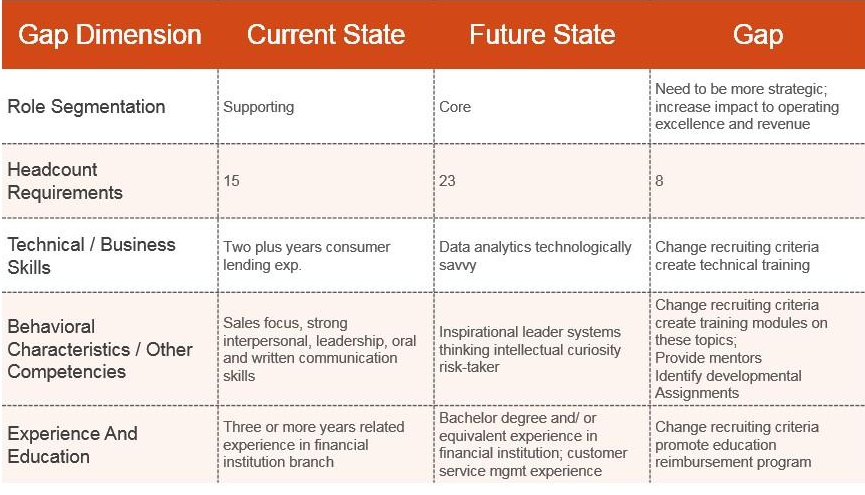
With the monday.com action plan, you can execute your strategic goals rather than leaving them up in the air with no clear next steps. When you draw up an action plan, you set the parameters for success and provide everyone involved in the workforce plan with a clear idea of how they should proceed.
monday.com’s workforce planning template
The monday.com workforce planning template gives you a clear and simple structure for refining your recruitment. It keeps you aware of the need to carry out regular skill audits, so you can take note of any skill gaps that require attention.
The dashboards feature in the Work OS presents an overview of key metrics, which you can use to evaluate employee performance, and evaluate skill gaps. The data will also inform you how much progress each team member makes, so you can tinker with the work dynamic to get the best out of each employee.
Every workforce plan should include an action plan. Laying out the next steps for your employees is crucial for staying on top of your recruitment strategy. You’ll need powerful project management tools to delegate tasks and oversee projects.
Workforce planning template tips & tricks
Assign a workforce leader
If you want to run a successful workforce plan, delegate a member of your HR team to spearhead the operation and ensure it’s executed successfully. Without someone at the helm, the plan will lack clarity of direction, which can slow things down.
Establish the criteria
To make your workforce plan work for you, establish criteria based on data you’ve collected internally. What works for one business might not work for yours since the skills you need to meet your objectives could be wildly different. Using time data and other key metrics, you can create a clear picture of where your workforce currently stands and map out where you want it to be a month, quarter, or year from now.
Plan for the future
Workforce planning shouldn’t be restricted to a one-off brainstorming session. To create an adaptable workforce that thrives, whatever happens, you need to dedicate time to the workforce plan on a regular basis.
Who could have foreseen the COVID-19 pandemic and the impact it would have on skill gaps and workforce issues? To mitigate some of the effects of unforeseen disasters such as the pandemic, check in on your workforce plan often.
FAQs about workforce planning templates
How do you create a workforce plan?
To create a workforce plan, first, assign someone from your HR team with leadership qualities to head up the operation. That way, everything can go through a single person, and the process can run smoothly. On a practical level, here are some things you can do to formulate a solid workforce plan:
- Establish your strategic goals.
- Assess your workforce and identify key skill gaps.
- Come up with an action plan with clear next steps.
- Execute and evaluate.
What are the 5 key elements of workforce planning?
- Strategize: ascertain your strategic goals, as this will inform the direction you take. Establish who will be responsible for the ongoing management and success of the workforce plan.
- Analyze: use data analytics to evaluate your workforce and identify skill gaps that could affect your recruitment strategy.
- Plan: create an action plan that lays out clear steps to take to address skill gaps within the company.
- Execute: assign tasks to the relevant departments and execute them. For example, draw up a list of skills in the perfect employee and hand it over to the recruitment department.
- Evaluate: evaluate the results so that you can refine the process the next time around.
What are the main workforce planning strategies?
One of the most important workforce planning strategies is the skill gap analysis, as this will inform your recruitment strategy or your workforce upskilling initiative. To carry out a workforce skills audit, identify an inventory of skills necessary in the most important roles and compare this to your current employees using key metrics and performance appraisals.
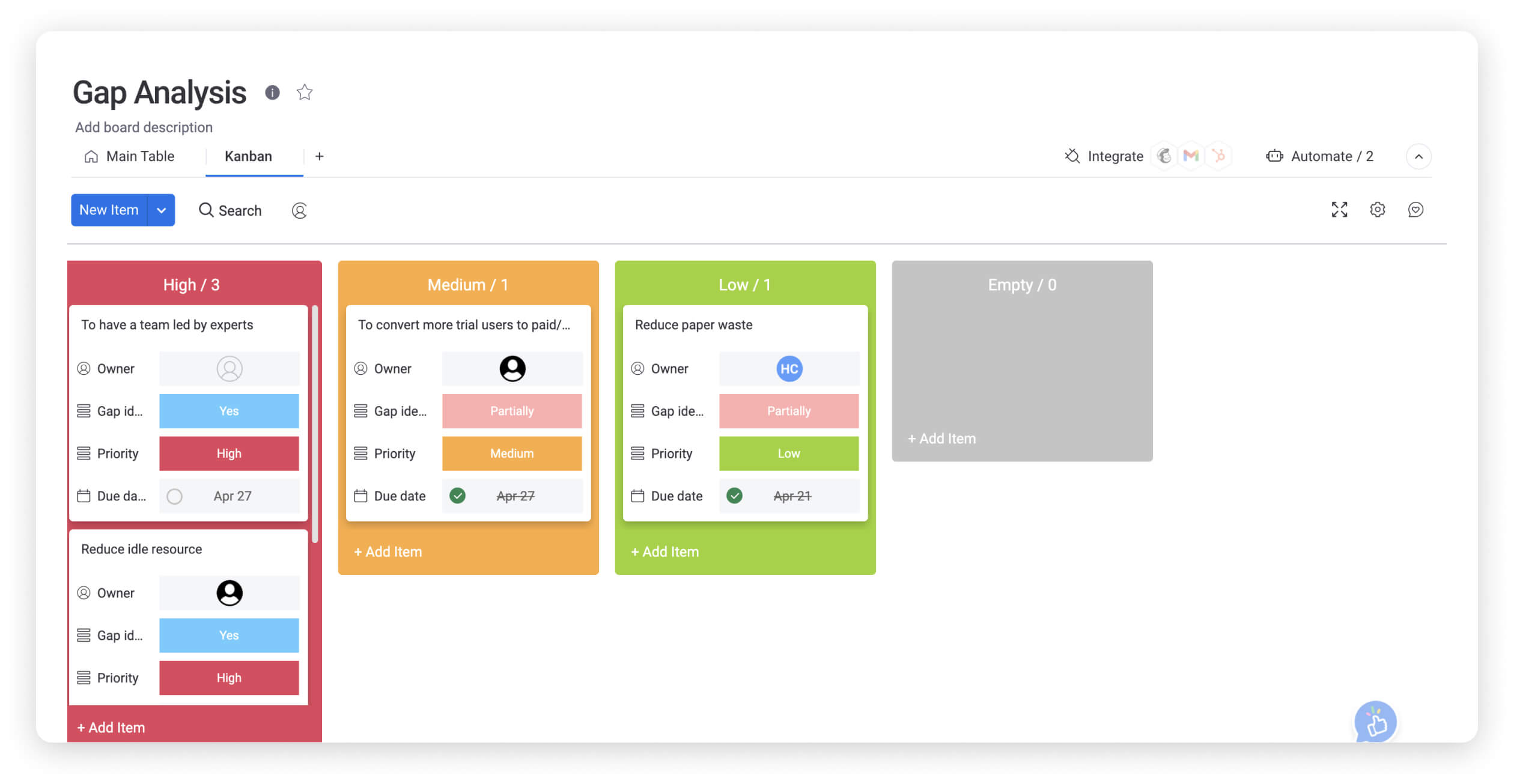
Another important strategy is to keep tabs on key metrics for your company’s growth, as this information will tell you what may be missing from your current workforce. This can inform training initiatives or help you build a picture of the perfect candidate to recruit.
The post Workforce planning guide with template appeared first on monday.com Blog.
Leave a Comment
You must be logged in to post a comment.
